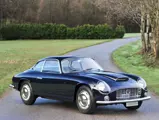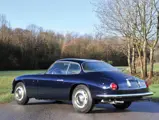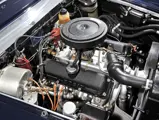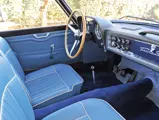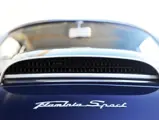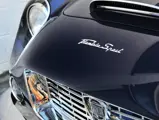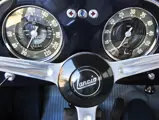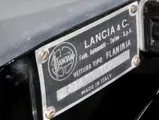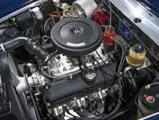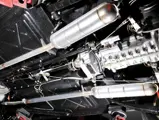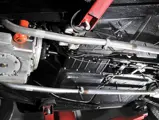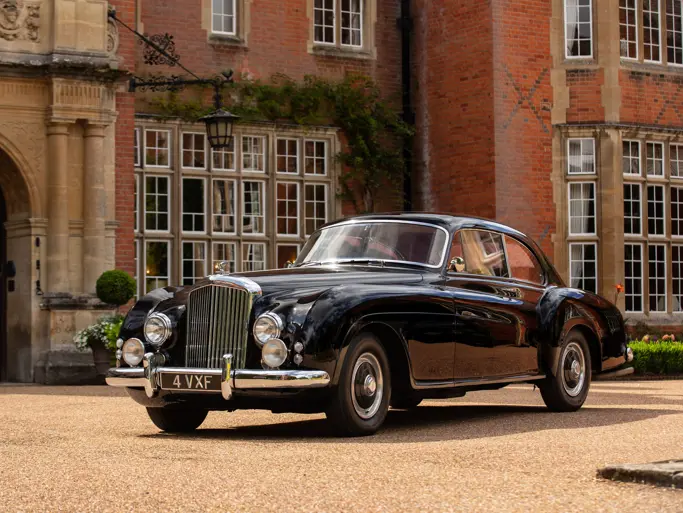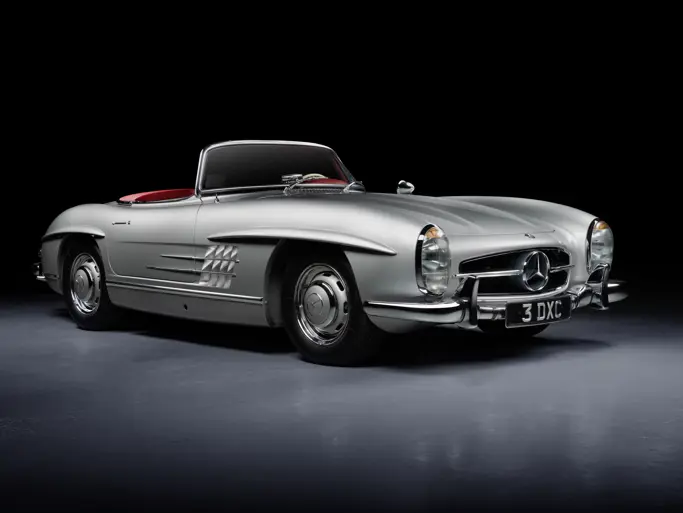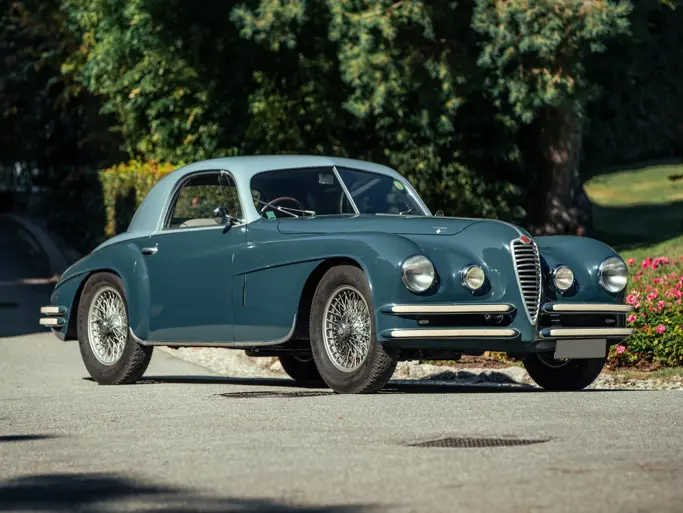Monaco 2014
1959 Lancia Flaminia Sport by Zagato
{{lr.item.text}}
€571,200 EUR | Sold
 | Monte Carlo, Monaco
| Monte Carlo, Monaco
{{internetCurrentBid}}
{{internetTimeLeft}}

- The holy grail of Flaminias; one of 99 first-series cars with covered headlamps
- Photo-documented Italian restoration, completed in 2004
- Legendary Lancia V-6 with stunning Zagato coachwork
- Includes FIVA and ASI paperwork
- Le Saint-Graal des Flaminia; un des 99 exemplaires de la première série à phares carénés
- Restauration en Italie avec photos à l'appui, terminée en 2004
- Légendaire moteur V-6 Lancia avec superbe carrosserie Zagato
- Accompagnée de ses papiers FIVA et ASI
119 bhp, 2,458 cc DOHC V-6 engine with a single Solex carburettor, four-speed manual rear-mounted transaxle, front independent suspension, rear de Dion axle with leaf springs and Panhard rod, and four-wheel hydraulic disc brakes. Wheelbase: 2,520 mm
Moteur V-6, 2 458 cm3, 119 ch, deux ACT, un carburateur Solex, boîte manuelle quatre rapports transaxle, suspension avant indépendante, essieu arrière de Dion avec ressorts à lames et barre Panhard, freins hydrauliques à disque sur les quatre roues. Empattement: 2 520 mm.
Although the post-war years at Lancia bore witness to some ground-breaking mechanical innovations, including front independent suspension, four-wheel disc brakes, and the world’s first series-production V-6 engine, by 1955, the company’s fortunes had somewhat diminished. Recognising the need to breathe new life into their model line, the Turin-based automaker reconnected with Carrozzeria Pinin Farina to produce the Florida Saloon, an Aurelia-based concept car that debuted at the Turin Auto Salon later that year. Public reaction to the Florida was overwhelmingly positive, and Lancia soon approved a production version, which was eventually dubbed the “Flaminia”, and it replaced the Aurelia as the company’s flagship model.
The Flaminia was initially built only as a berlina, but a Pinin Farina coupé eventually became available, and it experienced immediate success. Three years later, at the Turin Salon, the company introduced two sportier versions with shortened wheelbases, the Flaminia GT and the Flaminia Sport. Whilst the prior car was a grand tourer built by Touring, of Milan, the Flaminia Sport was bodied by Zagato and included a number of the firm’s hallmark styling cues, such as a sinewy, curvaceous body, covered headlamps, a central bonnet scoop, and the signature double-bubble roof.
The Flaminia’s body was fashioned in lightweight alloy panels, and Zagato’s coachwork endowed the sporty Lancia chassis with improved aerodynamics and distinctive good looks. Just 99 examples of the first Flaminia Sport with covered headlamps were constructed before the design was modified, and these earliest Sports remain the rarest and perhaps most sought-after of the three versions that were built before production ended in 1967.
In 2003, this Lancia was acquired by the previous owner, who subjected it to an intense restoration that stressed originality above all else. As demonstrated by a compendium of invoices, the exhaustive refurbishment was performed by the well-regarded Carrozzeria Quality Cars in Padova, Italy, whose craftsmen learned their trade under the tutelage of the famous Dino Colognato.
The classic 2.5-litre Lancia V-6 was carefully refinished to match the sparkling engine compartment, whilst the body was painted in an authentic coat of blue paint, which was complemented by an interior of light blue leather and white piping, with darker blue carpeting. After the handsome Flaminia completed its restoration in late 2004, the owner sought to bolster its provenance with accreditation from the most prestigious sanctioning bodies, securing both a FIVA identity card and ASI paperwork.
This outstanding early Flaminia Sport is beautifully prepared for presentation at finer concours d’elegance, and it is certain to be welcomed at numerous world-class vintage events and tours, as it is a very rare and highly desirable example that combines the finest in Lancia chassis engineering with the peerless styling that Zagato was penning at the twilight of the 1950s. This Flaminia Sport would make an outstanding addition to any collection of Italian post-war sports cars, as it is a singularly breath-taking automotive statement, with its ground-breaking V-6 and exquisite coachbuilt lines.
Flaminias such as this lovely example are exceedingly smooth, easy, and comfortable to drive. This car is well ahead of its time, and it would be ideal for spirited touring, as well as concours showings. It is the perfect GT.
Bien que la période d'après-guerre ait été accompagnée chez Lancia de certaines innovations marquantes comme la suspension avant indépendante, les freins à disque sur les quatre roues et le premier moteur V-6 de série, la situation de l'entreprise n'était, en 1955, pas des plus brillantes. Conscient de la nécessité d'apporter du renouveau à sa gamme, le constructeur turinois se rapprochait de la Carrozzeria Pinin Farina pour produire la berline Florida, un concept car basé sur l'Aurelia et présenté au Salon de Turin plus tard dans l'année. Devant la réaction enthousiaste du public, Lancia lançait une version de série, nommée « Flaminia » et qui remplaçait l'Aurelia, fer de lance de la marque jusque-là.
Au départ, la Flaminia n'était produite qu'en berline mais elle fut bientôt complétée par un coupé Pininfarina qui rencontrait un succès immédiat. Trois ans plus tard, au Salon de Turin, le constructeur dévoilait deux versions plus sportives sur un châssis plus court, la Flaminia GT et la Flaminia Sport. La première était une Grand Tourisme fabriquée par Touring, de Milan, alors que la Flaminia Sport était carrossée par Zagato et comportait plusieurs des traits caractéristiques à cette signature, comme une ligne sobre et fluide, des phares profilés, une prise d'air de capot et le fameux toit à double bosses.
La carrosserie Zagato de la Flaminia était réalisée en panneaux d'alliage léger, et elle apportait au châssis sportif de la Lancia une meilleure aérodynamique et un style original et séduisant. Seulement 99 exemplaires de la première Flaminia Sport, avec phares profilés, ont vu le jour avant que la forme ne soit modifiée, si bien que les premières Sport sont les plus rares et peut-être les plus recherchées des trois versions construites avant la fin de la production, en 1967.
En 2003, cette Lancia était achetée par son précédent propriétaire, qui lui a fait bénéficier d'une restauration approfondie, en respectant au maximum l'authenticité de la voiture. Comme en témoigne une liasse de facture, les travaux ont été effectués par l'atelier réputé Carrozzeria Quality Cars, à Padoue, en Italie, là où les artisans ont appris leur métier sous la tutelle du célèbre Dino Colognato.
Cette classique Lancia V-6 2,5 litres recevait une finition qui soit à la hauteur du compartiment moteur impeccable, la carrosserie étant habillée d'un teinte bleu authentique. Elle était complétée par une sellerie en cuir bleu clair avec passepoils blancs, accompagnée d'une moquette bleu plus foncé. A l'issue de la restauration de cette superbe Flaminia, en 1974, le propriétaire s'est préoccupé de confirmer son origine en s'adressant aux organismes les plus prestigieux, obtenant une carte d'identité FIVA et des papiers de l'ASI.
Cette exceptionnelle Flaminia Sport est magnifiquement préparée pour être présentée aux concours d'élégance les plus raffinés, et il est certain qu'elle sera accueillie à de très nombreux événements et rallyes historiques. Il s'agit en effet d'un exemplaire rare et très désirable, qui combine les meilleurs raffinements du châssis Lancia avec le style incomparable qui caractérisait Zagato au crépuscule des années 1950. Cette Flaminia Sport constituera un apport exceptionnel à toute collection de voitures de sport italiennes d'après-guerre car elle constitue une référence automobile indiscutable avec son V-6 révolutionnaire et ses lignes d'une grande élégance.
Les Flaminia comme celle-ci sont extrêmement douces, faciles et confortables à conduire. Cette voiture était très en avance sur son temps et sera idéale aussi bien pour les voyages rapides que pour les concours d'élégance. C'est une GT au plus pur sens du terme.

